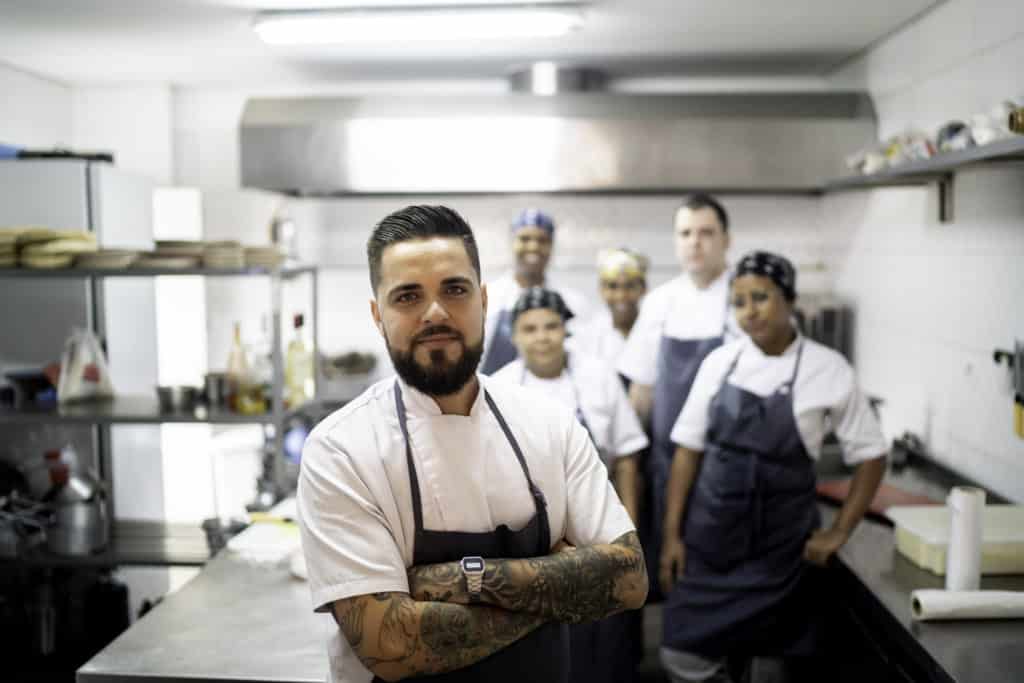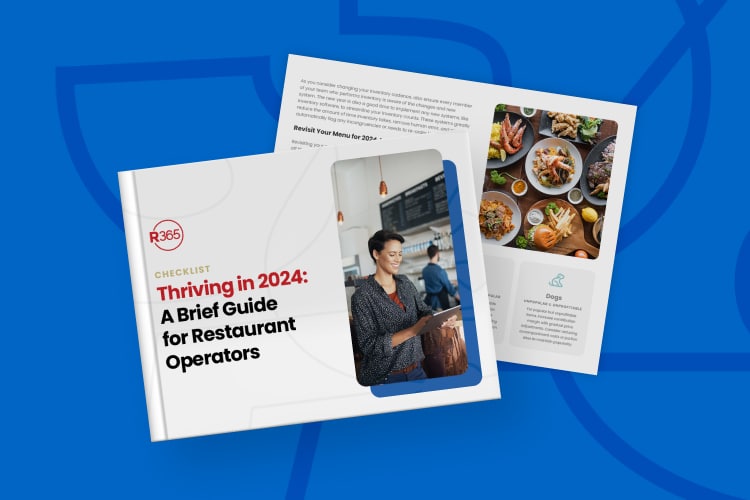It’s all restaurant owners and operators are talking about: the current staffing challenges in the restaurant industry.
Restaurant restrictions are starting to ease, with many places starting to resume full indoor capacity. And while this is good news, most restaurant operators are having trouble staffing their restaurants to meet the rising demand for on-site dining.
Employee retention and recruitment have long been a challenge in the restaurant industry. Staffing challenges existed pre-pandemic. However, the current moment is an unprecedented challenge for managers and operators.
The COVID-19 pandemic transformed the restaurant labor market at lightning speed. QSR magazine reports that at one point, restaurants “accounted for one in four of the 10 million jobs lost in the overall economy.”From then until March 2021, QSR says, the restaurant industry has added back roughly 4.2 million jobs. As of March 2021, the restaurant industry was employing around 10.5 million—more than at any time during the pandemic, but still “about a million fewer employees, year-over-year, and 1.8 million down from February 2020.”
The current situation is even tougher for full-service restaurants. The New York Times cites National Restaurant Association numbers that “staffing levels at full-service restaurants in February were still 20 percent — or 1.1 million jobs — lower than a year ago. (Employment at quick-service and fast-casual restaurants was down just 6 percent over the same period.)”
Restaurant labor shortage
While restaurant owners and operators are certainly relieved to be coming out on the other side of the pandemic, restaurant hiring has become a looming challenge.
On the plus side, business is starting to return given reduced restrictions and the start of warmer weather in many parts of the country. However, due to a lack of restaurant staffing, some operators are being forced to decrease hours or even close locations.
The labor shortage is particularly concentrated for back-of-house (BOH) employees, such as line cooks, prep cooks, and dishwashers.
The source of the labor shortage is being heavily debated, but most experts are linking it to many different factors pressuring the labor market at the same time.
Many are attributing the labor shortage to the extended federal unemployment benefits that were passed as part of the coronavirus relief bill. While it is true that the combined state and federal aid may be more than many establishments can afford to pay, it is not clear that unemployment benefits are the sole culprit, or if the labor shortage will resolve when increased benefits expire.Another significant factor may be that while restaurants were furloughing or laying off workers during the pandemic, other industries were hiring. Employees who could not afford to stop working may have changed careers, moving from restaurants to places like supermarkets, e-commerce fulfillment, and delivery. With competing industries heavily staffed, restaurants have a smaller applicant pool from which to choose.
A few other lingering pandemic-related issues are also pressuring the industry’s workforce. For instance, with schools or childcare facilities operating at reduced or limited capacity, many parents still have childcare issues that prevent taking restaurant jobs.
Finally, although vaccine rollout is in process, many restaurant workers cite continued concerns about exposure to the deadly virus.
Hiring challenges
Recruitment has long been a challenge in the restaurant industry. But having great staff is essential for a good guest experience.
Restaurant hiring challenges include:
- Finding serious candidates (who show up for interviews)
- Tracking applicants during the hiring process
- Finding a good culture fit
- Streamlining the onboarding process
- Retaining these employees in the long term
Compounding these challenges during the current labor crunch is the fact that, essentially, all restaurants are hiring for nearly all positions—all at the same time.
How can you manage hiring in general, particularly during a talent crunch? It can be challenging but being strategic about your recruitment and hiring process can make a big difference.
You may need to make significant changes in the way you recruit quality employees and focus on hiring with retention in mind. Here are some places to start.
1. Optimize your job postings
Gone are the days of pinning a job notice on a bulletin board. Most job candidates are looking for jobs on social media or Googling job titles, industries and geographic locations.
Use the most common job title
Many restaurant owners and operators want to show their excitement over certain restaurant positions. However, to optimize for what candidates are searching for, use the most common and simple job title for your open positions, like:
- Instead of mixologist, bartender
- Instead of pizza artist, cook
- Instead of hospitality specialist, host or customer service
Include a range for wages and salaries
Some experts are advising that because of the labor shortage, “there may need to be a bump in pay to get that talent back.”
With today’s competitive labor landscape, you need to be upfront about your wages. Not having the wage range or salary range will result in your getting fewer applicants.
In your posting, give the actual compensation range instead of the general terms like “plus tips, quarterly bonuses, signing bonus.” If a candidate can see that your wages cover their cost of living, they will be more likely to apply.
Catch their attention
Let’s be honest: no matter what kind of restaurant you run, line cooks will have similar job duties, expectations, and responsibilities. The actual job duties of most restaurant jobs sound pretty similar on paper.
Your culture is what distinguishes your restaurant, so your hiring should communicate what makes your restaurant special. When you write the text for your job posting, use the first two paragraphs to catch their attention. Discuss your culture, values, mission, and how you celebrate team members.
Once potential candidates understand the overall goal your team is working toward, they can better understand why the job responsibilities are important.
2. Be creative about where you post jobs
Unfortunately, in today’s workforce, you can’t just post a job and watch applicants line up at the door. You need to be actively recruiting to find quality candidates. Not only do you need to optimize your job postings, but you also need to make sure you’re listing in the right place.
Consider posting in places such as:
- Industry trade publications
- Social channels
- University job boards
- Minority job boards
In addition, some job sites or social media platforms allow you to use “geo-targeting” for your posts. You can target your job listings to workers who live in your area, helping ensure that a long commute is not a discouraging factor.
3. Create a professional career page
You also need to show applicants that working with your company has the potential to turn into a career, not just a job.
First, make sure to create a career page on your website. Consider naming this page “careers.” not hiring, to show how you value your team members. Place this career page within the top header of your website to make it visible to applicants. This page should celebrate current employees and display your culture.
Your career page should also showcase any activities that you are doing to invest in your employees and improve employee retention. To stand out in a competitive restaurant hiring field, many restaurants are considering increasing wages, boosting benefits, or focusing on a positive and supportive workplace culture. Some restaurants are even considering profit sharing, year-end bonuses, and hospitality skills training. Make sure your page makes it clear what perks and benefits you are offering.
Finally, make sure to connect the career page to a QR code, and put this QR code everywhere in your restaurant (menus, host stand, even laminated on the front door). Your current loyal customers may know potential candidates or be good candidates themselves.
4. Utilize pre-screen questions and assessments
Most restaurant managers know the pain of scheduling a dozen interviews, only to find that maybe just one or two applicants actually show up.
Save your managers time (and headache) by adding a layer of accountability that will improve the chances that those who apply will follow through. Using automatic prescreening questions and assessments through your applicant tracking system (ATS) will not only help you understand the knowledge level of applicants, but more importantly, will demonstrate how interested an applicant is in the position. You can measure engagement through an applicant’s willingness to fill out these extra steps before inviting them to an in-person interview.
One Restaurant365 client, Sweet Lou’s, found that when they used an assessment to filter candidates, only one out of the 10 candidates didn’t show for an interview (as opposed to the typical five no-shows out of 10 interviews).
5. Offer a referral bonus to current employees
Finally, you can consider leveraging referrals from your current long-term, loyal employees as a recruitment tool as well.
Make sure to communicate clearly with your staff about why you are interested in using them for referrals: because you value them, and you want more employees like them. This will help your employees understand your ask and take the referral process more seriously.
A referral program should also include a referral bonus to add motivation for staff members. After a certain period, once a new hire is onboarded through your onboarding system, you can pay out this referral bonus.
Make the bonus large enough to matter (no less than $250), and it should be paid after no less than 90 days. A meaningful and speedy bonus enables you to celebrate the referrer and show how you value them.
Conclusion
After a challenging year for the restaurant industry, it’s tough to now face a tight labor market. However, with a strategic recruitment process and smart hiring decisions, your restaurant can stand out from the crowd and find quality team members.
R365 HIRE makes it easy to attract, hire, and onboard the best employees for your restaurant group.



